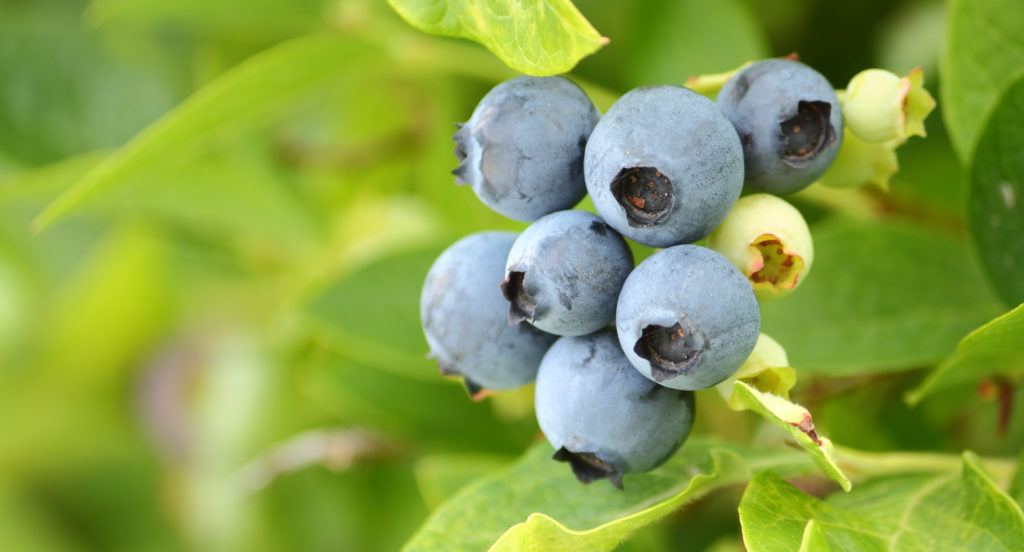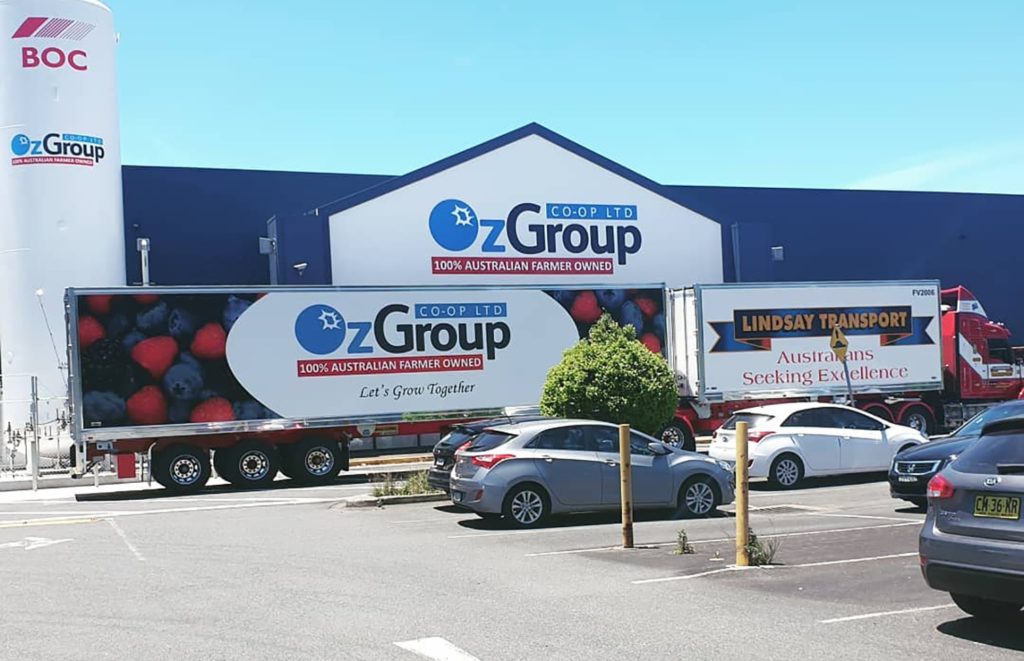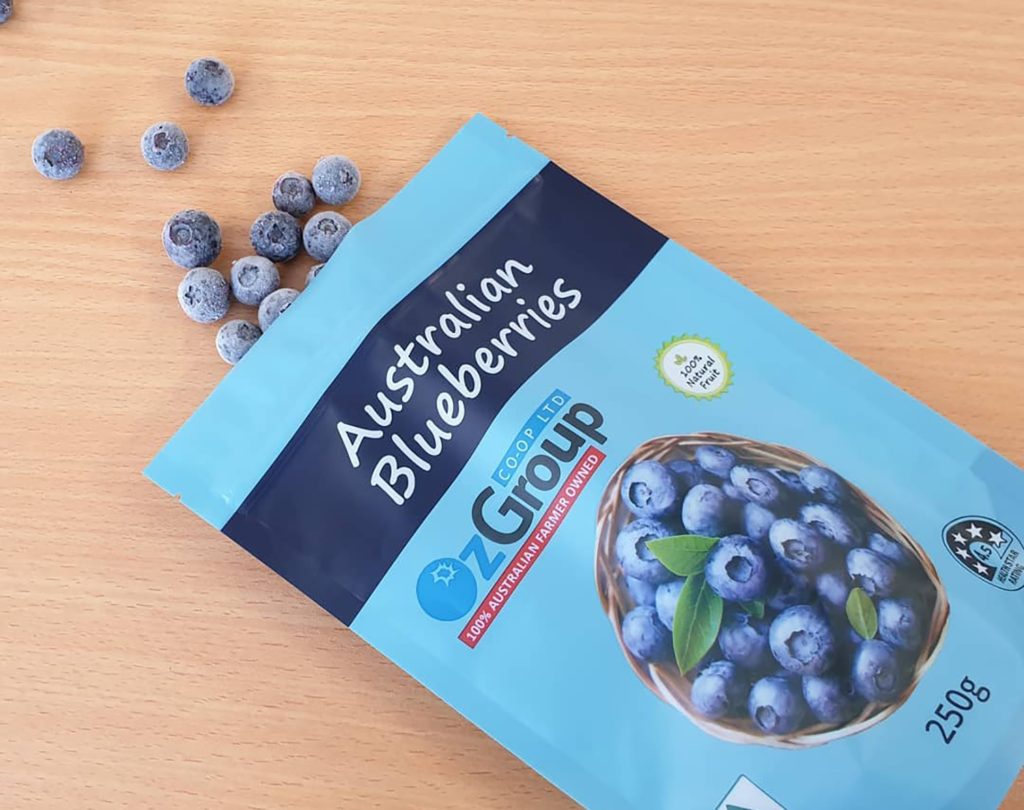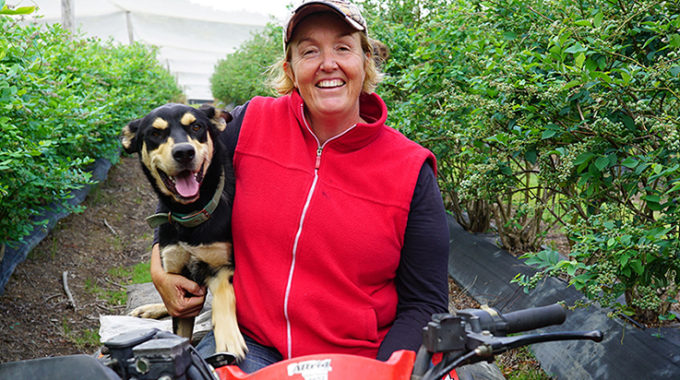Potts of Berries: true blue tenacity
Eativity meets the delightful Kellie Potts of Potts of Berries, a NSW blueberry grower who, like so many others in her region, has faced more than her fair share of troubles over the past year. We discover why wet conditions can spell disaster for blueberries, how native bees can be a berry grower’s best friend, and why perfection comes at a price.
Peak blueberry season runs from October to February, so at this time of year, fruit-loving Aussies are usually swimming in fresh, juicy blueberries. However, this summer, consumers may have found their beloved blueberries to be in shorter supply.
Ongoing labour shortages continue to cause problems for growers across the country, with crops going to waste as there simply aren’t enough hands to pick them. Further adding to growers’ woes, prime blueberry country in NSW was hit with heavy rains twice last year, in March/April and November/December. And to add insult to injury, freak hailstorms in November slammed blueberry farms south of Coffs Harbour. Some berry growers saw their entire crops wiped out, while others have been left with damaged fruit.

A matter of rust
For blueberry farmer Kellie Potts, who runs the 15-acre blueberry farm Potts of Berries at Woolgoolga on the NSW mid-north coast, this run of bad weather saw her lose a significant number of berries. However, despite this, she was one of the luckier ones.
“Back in March/April, we had two or three metres of rain,” she says. “It just rained relentlessly. An enormous number of blueberry farmers lost all their crops.”
Blueberries can be affected by a disease called rust, a type of fungus. Some varieties are more susceptible to rust than others, but the most common varieties – Southern Highbush – are the most susceptible. And warm, wet conditions make for ideal rust development.
“Some growers pruned their entire crops and didn’t pick anything,” Potts says. “That was hugely devastating. For us, we had quite a few blocks that just totally defoliated and we didn’t pick them at all this year. We lost maybe four or five tonnes at the end of the winter season. But to be honest, we didn’t have the pickers to pick the fruit anyway.”

Pickers take their pick
Potts runs Potts of Berries single-handedly, with help from her teenaged children during school holidays and a team of seasonal workers. But for the past two years, she has struggled to find enough workers to help pick her blueberries.
“It’s annihilated us a little, because pickers now have the upper hand,” she says. “Which is not a real big problem. I’m kind of happy for the pickers, because it hasn’t always been that way for them. But it’s at the point where now, a lot of the good pickers will come and check your fruit out before they pick it. And then they’ll ask a price. And then they’ll just choose not to come. We’ve been paying $1 more than we needed to according to the Horticulture Award. Our top pickers were earning $440 for the day.”
While the current situation is great for pickers, it’s adding more financial strain for growers who are already facing lean times due to lost crops and low market prices. For Potts, she was recently making as little as 50 cents a kilo for her berries, while also having to offer higher wages to attract and maintain a team of pickers.

The powers that bee
Fruit pickers are not the only workers that Potts relies on for a good harvest. She has also installed 50 hives of native bees, which provide essential pollination services.
“The blueberry has a really small flower,” she explains. “So they’re really hard to pollinate. And if you don’t get good pollination, the fruit doesn’t grow very big. Every time a bee pollinates the flower, one seed forms. The more seeds that form, the bigger the berry.”
While the European bee can only reach inside the flower with its proboscis to access the nectar, the native bees that Potts uses are small enough to crawl right inside the flower.
“The native bees naturally have pollen all over their body,” she says. “So they’re doing a brilliant job just by walking into the flower. It’s been a real success story for us; the uniformity of our fruit has been a lot better since we introduced the native bees.”

Strength in numbers
Potts recently ran a special native bee workshop to “share the love” with other growers, all of whom belong to the Oz Group Co-operative. The co-op is made up of more than 140 berry growers located along the mid-north coast of NSW, a region where almost 80 percent of Australian blueberries are produced. Beginning with just four grower families in 2001, Oz Group is now the largest blueberry supplier in Australia. And the benefits it offers growers extend well beyond the sharing of knowledge.
Last year, Oz Group turned over $213 million. This is money that flows back to co-op members and the local community. Members can access berry genetics through Driscoll’s, which partners with the co-op and which has developed a number of highly successful new berry varieties. Oz Group now owns its own packhouse, which provides centralised packing and distribution services, and the co-op also employs agronomists, who are available to provide advice to members whenever they need it, at no extra charge.
“The co-op is great, because there are all these growers that aren’t competing against each other in the main markets,” Potts says. “It’s better that we’re all in the same boat, paddling in the same direction. And it gives us more buying power.”

A perfect problem
Oz Group recently installed a system at the packhouse that allows them to snap-freeze downgraded fruit which is then sold to Coles supermarkets. This has significantly reduced fruit waste and provides growers with another source of income. But this “downgraded” fruit is hardly of poor quality. Quite the opposite, in fact.
“It’s the fruit that’s the yummiest because it’s the ripest,” Potts says. “It’s just too soft to make the trip through packing. But because it’s snap-frozen, it’s so good to eat.”
Some fruit is set aside purely for cosmetic reasons – a small mark, perhaps. But this means it doesn’t meet retailer requirements.
“The thing that saddens me a little is the need for the consumer to have perfection,” Potts says. “The hailstorms that came through, some people lost everything; they won’t even have an income until next year. We didn’t lose everything, but it’s certainly taken its toll.”
The hail at Potts of Berries left some very small scars on some of the berries, which were small and green at the time of the storm. These tiny scars don’t affect the eating quality, but they do affect the price that the fruit can fetch once its ready to be picked.
“It’s not a scar that becomes a bruise, so when you eat it, it’s soft and yucky,” Potts says. “It’s just a really tiny mark, and it’s nothing. So it’s disappointing that consumers want absolute perfection, when this fruit is still top quality and exactly the same to eat.
“Farmers go to so much effort to work hard and produce quality fruits and vegetables. If it has a small mark on it, why do people care so much if it’s still delicious?”
You can find out more about Potts of Berries by checking out the farm’s Facebook page. You can also find more berry info and recipes at the Australian Blueberries website.









